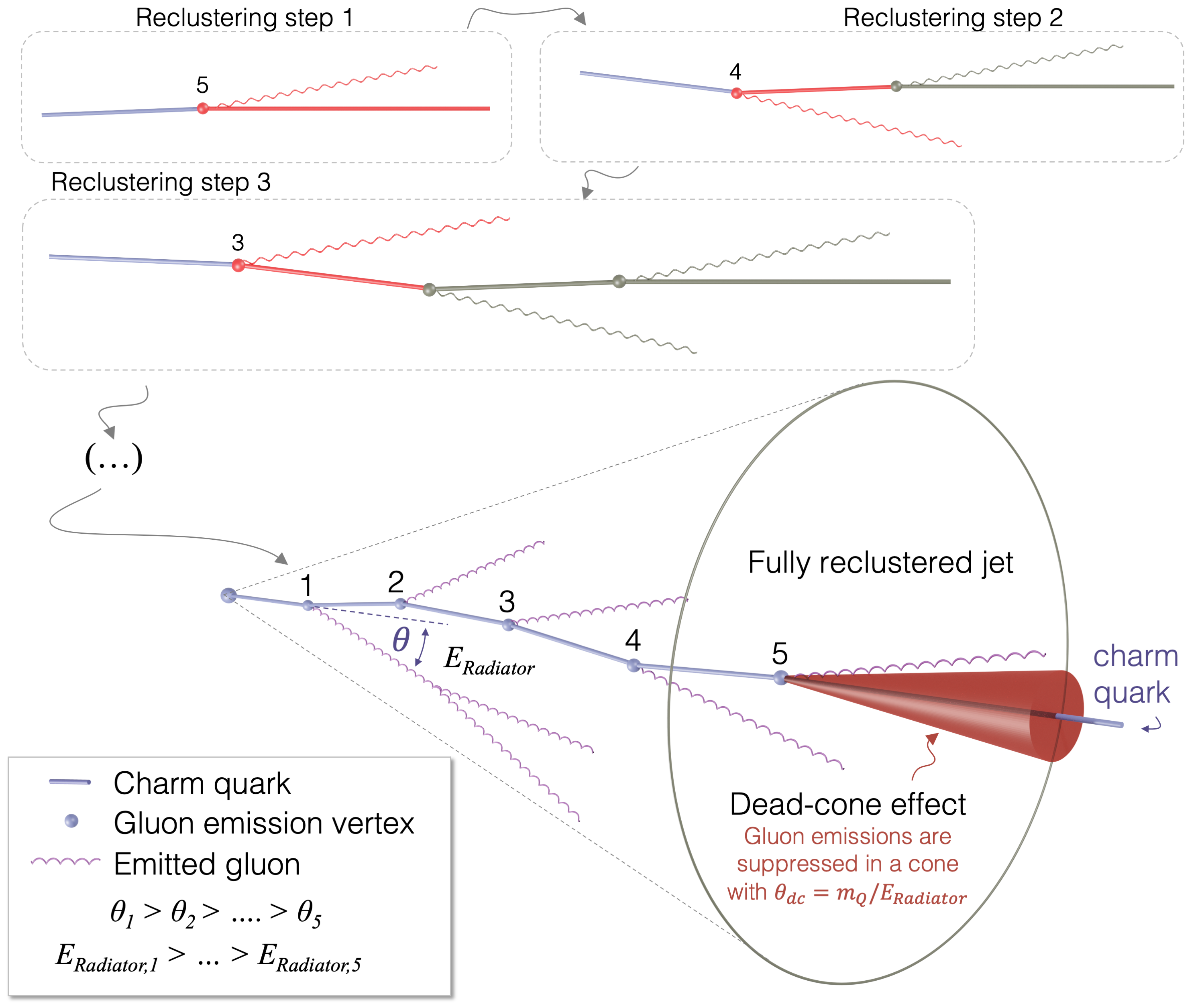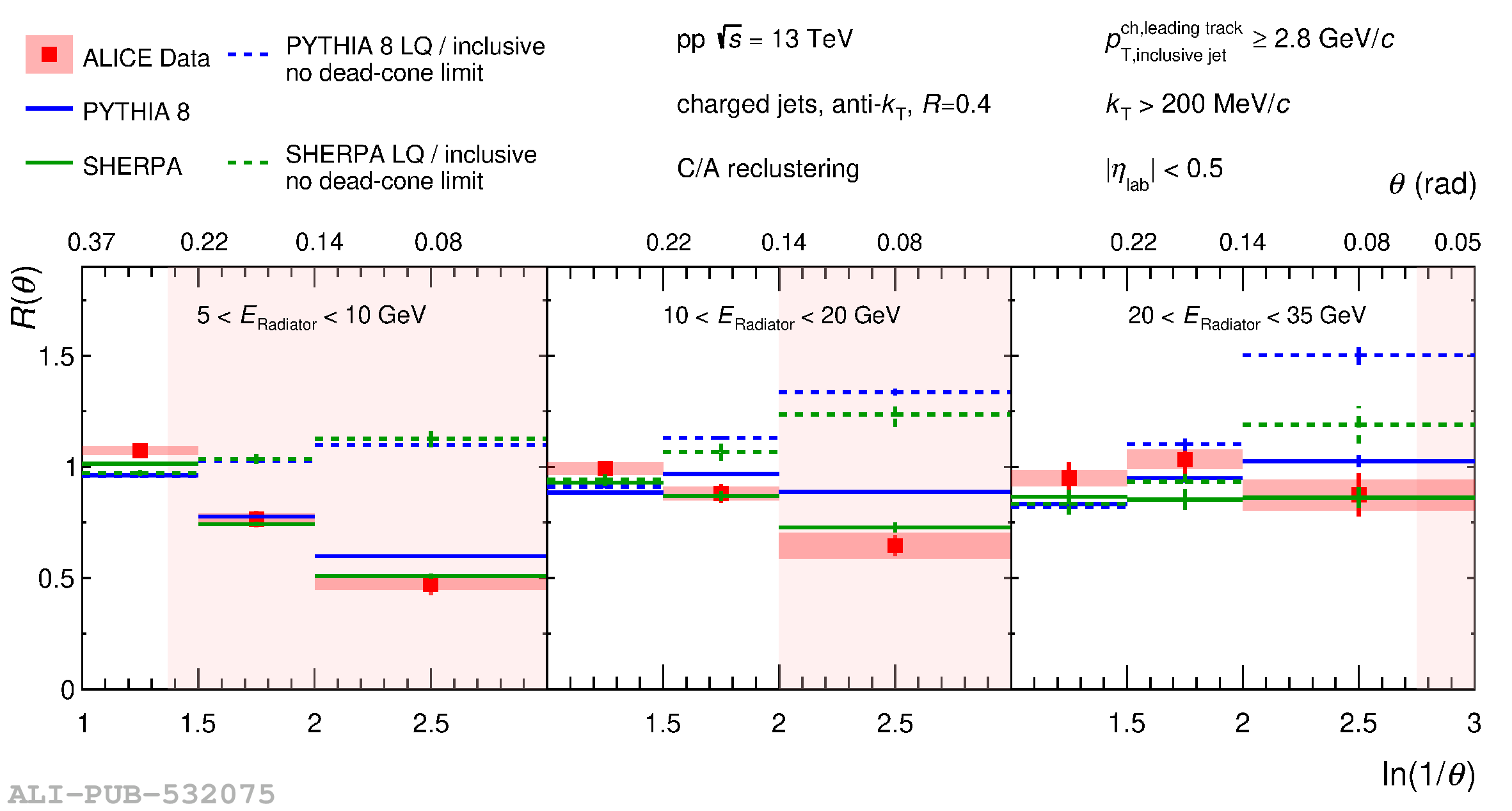In particle collider experiments, elementary particle interactions with large momentum transfer produce quarks and gluons (known as partons) whose evolution is governed by the strong force, as described by the theory of quantum chromodynamics (QCD). These partons subsequently emit further partons in a process that can be described as a parton shower which culminates in the formation of detectable hadrons. Studying the pattern of the parton shower is one of the key experimental tools for testing QCD. This pattern is expected to depend on the mass of the initiating parton, through a phenomenon known as the dead-cone effect, which predicts a suppression of the gluon spectrum emitted by a heavy quark of mass $m_{\rm{Q}}$ and energy $E$, within a cone of angular size $m_{\rm{Q}}$/$E$ around the emitter. Previously, a direct observation of the dead-cone effect in QCD had not been possible, owing to the challenge of reconstructing the cascading quarks and gluons from the experimentally accessible hadrons. We report the direct observation of the QCD dead cone by using new iterative declustering techniques to reconstruct the parton shower of charm quarks. This result confirms a fundamental feature of QCD. Furthermore, the measurement of a dead-cone angle constitutes a direct experimental observation of the non-zero mass of the charm quark, which is a fundamental constant in the standard model of particle physics.
Nature 605 (2022) 440–446
HEP Data
e-Print: arXiv:2106.05713 | PDF | inSPIRE
CERN-EP-2021-107
Figure group


